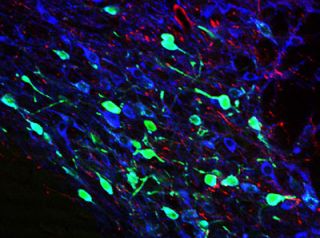Gratitude
Train Your Brain for Gratitude: 3 Minutes a Day for 45 Days
Motivate yourself to see good and move forward; build a new neural pathway.
Posted August 10, 2015

Last week I called a treasured friend for advice. She listened carefully then said, “You are not going to like what I have to say.” I reminded her that I was truly grateful for our long friendship and indeed I would be fine with it. Well, I wasn’t. She did not tell me what I wanted to hear. My Pollyanna disposition took a dive. I am a fixer. And my friend told me that I had to have patience. I dragged through the day and I couldn’t find my smile.
The next day I took a long walk to the wharf and watched the sunset. There I thought of all the friends who had come to me wishing for a magic word to uplift their spirits. My usual suggestion is to count one’s blessings to outweigh sadness.
Suddenly I began to question my own gratitude advice. Sometimes just a hug can be the ice breaker. But what happens when you just cannot muster up those loving feelings? This is the time when Robert A. Emmons, Ph.D., professor of psychology at University of California, Davis, would be reminding me: "Gratitude is an attitude, not a feeling that can be easily willed."
In personal interviews he has pointed out that even if you are not satisfied with your life as it is today, just go through grateful motions. He said, "It is like improving your posture and as a result becoming more energetic and self-confident."
A Gratitude Reward from the Universe: A Trailblazing Brain
Even after sending out thank you notes, as with writer’s block, I was beginning to face a blank gratitude page. But somehow the universe rewards our efforts in ways we least expect. For me, help literally came from out of the blue – in an email from Loretta Graziano Breuning, PhD, of the Inner Mammalian Institute. She created three videos – very basic ones at home – that finally gave me insight into our happy brain. She is the author of Meet-Your-Happy-Chemicals.

What I learned is that you cannot just give gratitude a try -- you must work at it consistently for at least 45 days. This is what Dr. Breuning talks about in her videos and what we discussed in a phone conversation last week:
"Life is frustrating because happy chemical spurts are short. You have to do more to get more. Also electricity flows into the old neural super highways – and you have to focus intensely to steer it into new neural trails. But here is the good news. Since our brain has a huge stock of extra neurons, you can build new neural pathways with them. It is not easy. But you have the power to repeat a new behavior until a neural pathway is created and electricity can flow in a new direction.
For example, you can wire yourself to see the good in the world. Oftentimes, this gets ignored because it has no place to flow until you build a new pathway. And you can do this by focusing on the good three minutes a day or three times a day at one minute intervals."
Dr. Breuning pointed out that you must keep up the gratitude focus for 45 days even if it seems fake or foolish. Here's the catch. She says:
"If you miss a day, start over from Day One. You must go 45 days straight because that is what it takes to get a new trail established. Trailblazing takes a lot of focused energy. Make your energy available for gratitude. You'll be so happy that you did."
What happens in this exercise is that in creating and expanding the pathway for good, the neurons in the brain that you might have depended upon for negativity may lose some of their drawing power. These old neurons remain there - just as temptation is always with us. However, once you've created that new neural pathway for gratitude, because it is available, you will be less likely to take the old road of negativity.
Resources:
Here are links to the videos: Your Ups and Downs Are Natural...and also learned
Part 1https://youtu.be/yCgCwe_A4pc
Part 2 https://www.youtube.com/watch?v=_OiXtz2x1_U
Part 3 https://youtu.be/-KcpjcD7sOI
Link to the worksheets: http://innermammalinstitute.org/worksheets-your-ups-and-downs-are-natural/
Link to the website: www.InnerMammalianInstitute.org
Brain image from NIH paper which noted Image courtesy Dr. Marisela Morales, NIDA IRP November 12, 2014
Copyright 2015 Rita Watson


